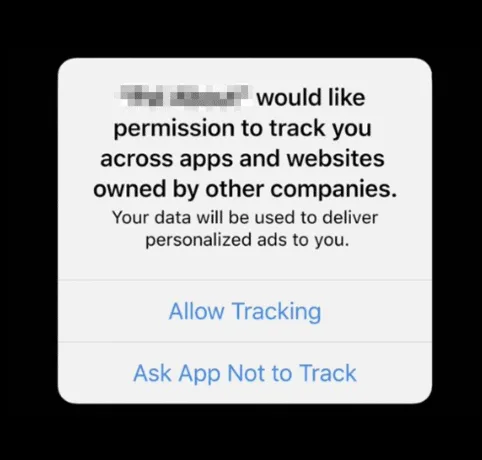iOS 14 IDFA Changes: What Does This Mean For Publishers?


Late last month, Apple quietly announced a pretty big change coming to the latest version of its iPhone and iPad operating system iOS 14.
iOS 14 will begin requiring users to opt in for developers to access their devices’ advertising ID, or IDFA, as it’s commonly referred to.
Given all the exciting features Apple announced at WDDC (Worldwide Developers Conference) 2020, this change was initially picked up by just a few mainstream outlets.
That all changed when Facebook declared in response that it would discontinue using IDFA within its own app — and that countless developers could potentially lose billions as a result.
This, as you can imagine, raised concerns for all of us who depend on advertising revenue. But will this impact you as publishers?
First and foremost, it’s important to note that the IDFA is ONLY for apps. IDFA does not affect the mobile or desktop web, where Mediavine’s content creators monetize their sites.
That said, it’s also worth considering the bigger picture and the evolving ad ecosystem that is driving these changes.

The IDFA stands for the Identifer for Advertisers. It’s a unique, anonymous device identifier used in digital advertising to allow the personalization of ads, as well as the tracking of analytics, measurement and attribution.
Again, the IDFA is only available in mobile apps, and is not on the mobile web.
If someone is browsing your website on Safari or Chrome on an Apple device, the webpage will not have access to the IDFA.
In short, think of the IDFA as the third-party cookie of the app world. It’s what allows advertisers to target the audience they want and track performance to see if their campaigns are working.
Without this unique identifier, Facebook expects more than a 50% drop for its app developers. If non-personalized ads on mobile web are any indication, that might even be a conservative estimate.
Not this minute. Apple is delaying enforcement of the feature until “early next year”, the company confirmed today.
iOS 14 is expected to be released in late 2020. Developers will be able to integrate this prompt into apps as soon as iOS 14 is released, but they will not be required to, as previously indicated.
While somewhat vague, “early next year” realistically aligns with mass implementation of iOS 14 among Apple users. A short grace period is nice, but this is coming sooner rather than later.
When the time comes, my prediction is that most developers will likely still try to collect IDFA from their users, unlike Facebook.
The problem? The cryptic IDFA opt-in popup, which developers have no control over, will look like the following:

It’s impossible to know what opt-in rates will look like until this is live, and equally hard to predict the ways in which developers will be able to incentivize users to opt-in.
Once we see how this plays out a bit, we’ll have a better idea if IDFA is dead or if it continues to be the primary method of transacting in-app.
Attribution, or the way of knowing if an advertisement actually results in a sale (or whatever metric you designate for conversion), is just as important as personalization. For this, Apple proposes that developers adopt its SKAdNetwork API.
This Apple-controlled advertising system will allow registered networks to receive notifications when a conversion happens. This should mitigate some of the loss, but is certainly not a replacement for IDFA.
So what will app developers do?
It’s impossible to predict right now, as we said earlier, but there are basically two solutions:
The equivalent for the IDFA on mobile and desktop web (a.k.a. Mediavine sites) is the third-party cookie. Using third-party cookies, advertisers are able to create their own identifiers for ad personalization and tracking.
Apple actually nixed third-party cookies awhile back, using something they call Intelligent Tracking Protection, or ITP. ITP gets updated with nearly every update to iOS to prevent advertisers from tracking users.
The result is that iOS and Safari traffic monetizes significantly worse than Desktop Chrome and Android devices, where third-party cookies still exist.
Unlike the app community, there’s never been an urgency to solve for this. Instead, publishers and advertisers typically focus efforts on Chrome users and accept that iOS and Safari users aren’t worth quite as much.
If you’re an iOS app developer, you don’t have that luxury. You have one market for that version of your app.
But guess what’s coming to Desktop Chrome and Android? The end of third-party cookies.
That means for the first time, we’re going to see app developers and web publishers trying to solve for the same issue. How can we exist in a world without third-party identifiers?

Both in-app and web share one common solution, and that’s first-party data.
First-party data is where a user is logged in to your website or app, and publishers use the data collected about the user to help with ad personalization, measurement and tracking.
As we’ve discussed at length in recent months, being ahead of the curve on this is vital to our continued success and we have made first-party data the cornerstone of our roadmap for the next few years.
This won’t have a direct or immediate impact, as we said earlier. Mediavine publishers are web publishers, not app developers. The IDFA is not commonly used in mobile web advertising, so there should be few if any effects.
Indirectly, and down the line, we actually see this as a good thing for our publishers.
For the next couple of years, while we still have third-party cookies, some of the affected advertising budgets will likely move to areas where personalization and tracking is stronger.
Put another way, some of the ad spend that would normally be directed toward mobile apps, such as app installs, may shift to the mobile web, to Mediavine publishers’ benefit.
More broadly, the ecosystem’s continued shift toward first-party data is a positive change and one we are dedicating considerable resources to embrace and prepare for.
The more we control our data and our relationships with users, the less vulnerable our businesses become when companies such as Apple make sweeping changes outside of our control.
How do Mediavine publishers start taking control of their data and user relationships right now?
Well, funny you should ask because we have a great product for that, called Grow.
It’s in its early stages, but with several hundred adopters and counting, it’s progressing every day. It’s free to Mediavine publishers to begin using right now, which we encourage.
The sooner we take control, the better our future will look when it merges with the app world.
Stay up to date with the latest from Mediavine
Welcome to the much-anticipated release of the fifth-annual edition of “The Best eCPM Days of the Year” calendar. Each year, we analyze historical trends to provide publishers with a graphical …
“Let’s talk about politics.” We know. This is a phrase absolutely no one wants to hear uttered around the dinner table or backyard barbecue these days. But hear us out. …
Ah, July. It’s a glorious month of sand-filled swimsuits, mosquito invasions, broken air conditioners and applying sunscreen only to look like cooked lobsters. It’s also the start of a new …